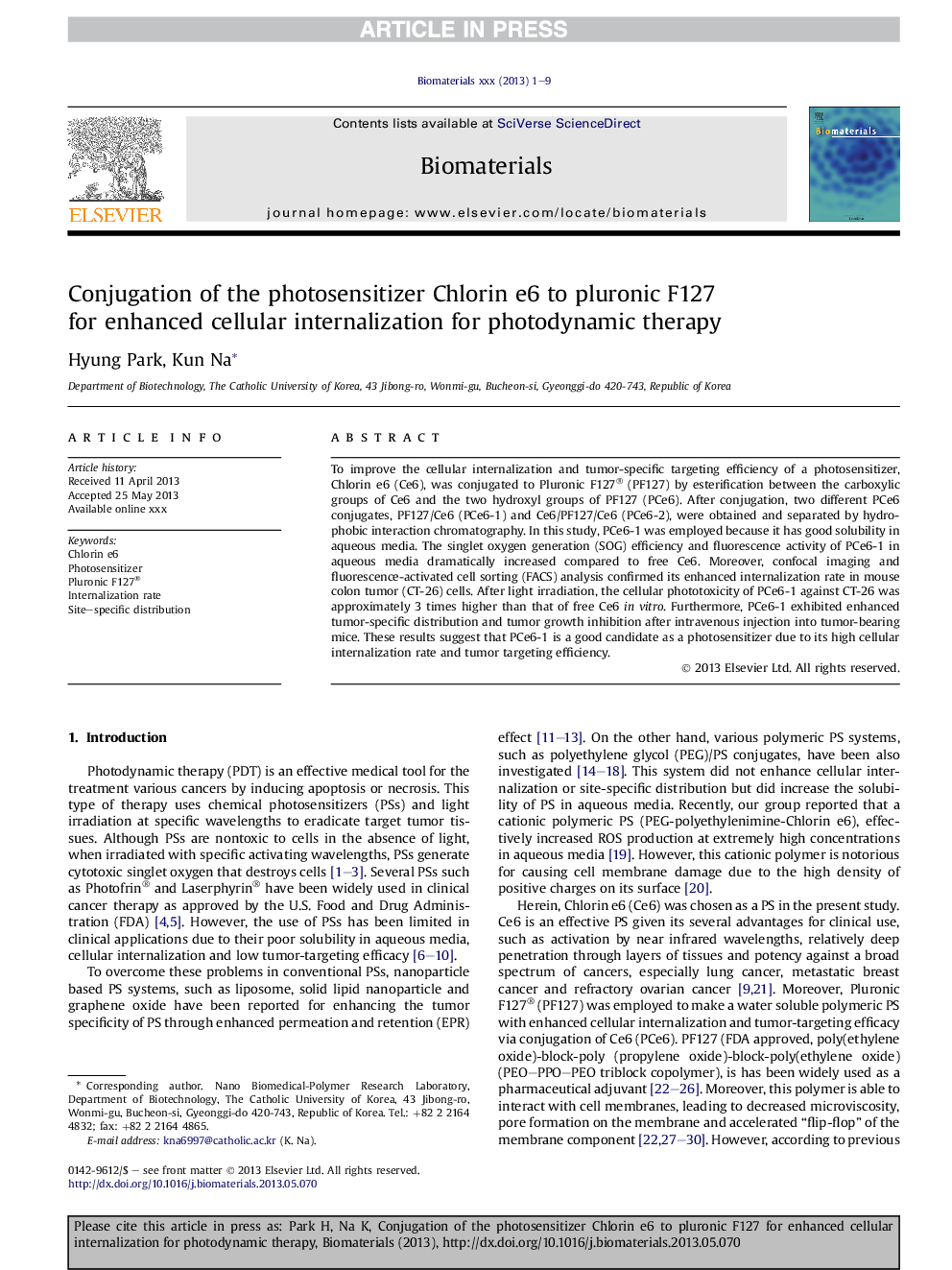| Article ID | Journal | Published Year | Pages | File Type |
|---|---|---|---|---|
| 10228958 | Biomaterials | 2013 | 9 Pages |
Abstract
To improve the cellular internalization and tumor-specific targeting efficiency of a photosensitizer, Chlorin e6 (Ce6), was conjugated to Pluronic F127® (PF127) by esterification between the carboxylic groups of Ce6 and the two hydroxyl groups of PF127 (PCe6). After conjugation, two different PCe6 conjugates, PF127/Ce6 (PCe6-1) and Ce6/PF127/Ce6 (PCe6-2), were obtained and separated by hydrophobic interaction chromatography. In this study, PCe6-1 was employed because it has good solubility in aqueous media. The singlet oxygen generation (SOG) efficiency and fluorescence activity of PCe6-1 in aqueous media dramatically increased compared to free Ce6. Moreover, confocal imaging and fluorescence-activated cell sorting (FACS) analysis confirmed its enhanced internalization rate in mouse colon tumor (CT-26) cells. After light irradiation, the cellular phototoxicity of PCe6-1 against CT-26 was approximately 3 times higher than that of free Ce6 in vitro. Furthermore, PCe6-1 exhibited enhanced tumor-specific distribution and tumor growth inhibition after intravenous injection into tumor-bearing mice. These results suggest that PCe6-1 is a good candidate as a photosensitizer due to its high cellular internalization rate and tumor targeting efficiency.
Keywords
Related Topics
Physical Sciences and Engineering
Chemical Engineering
Bioengineering
Authors
Hyung Park, Kun Na,
